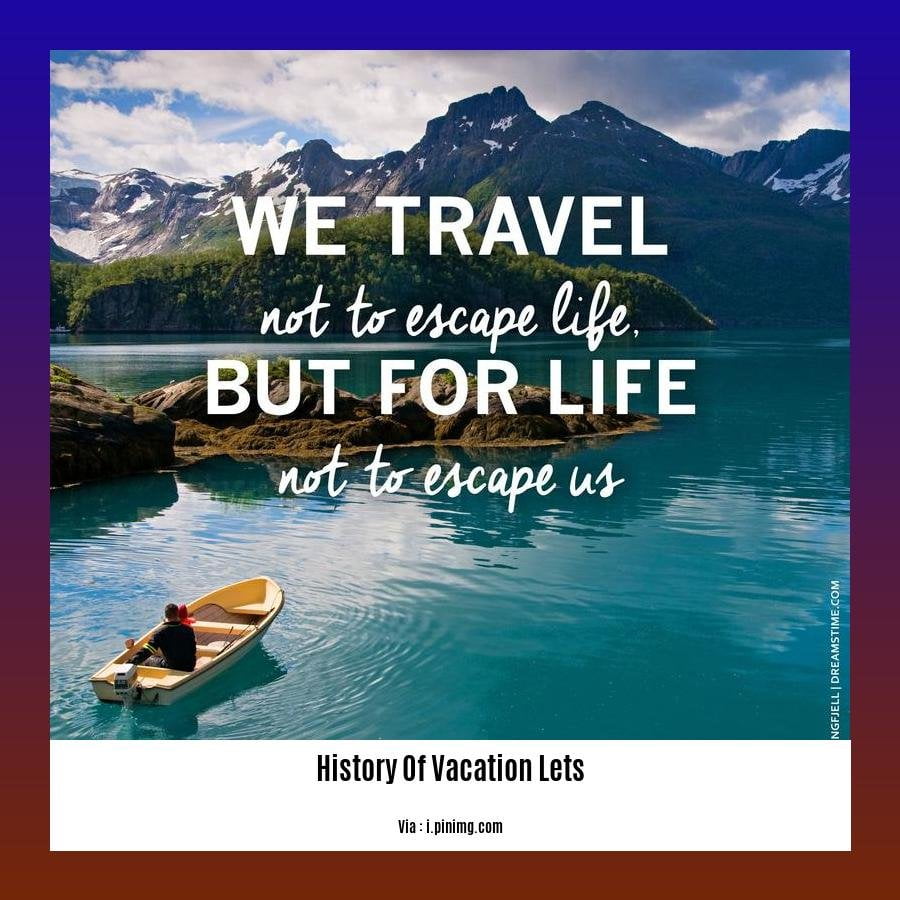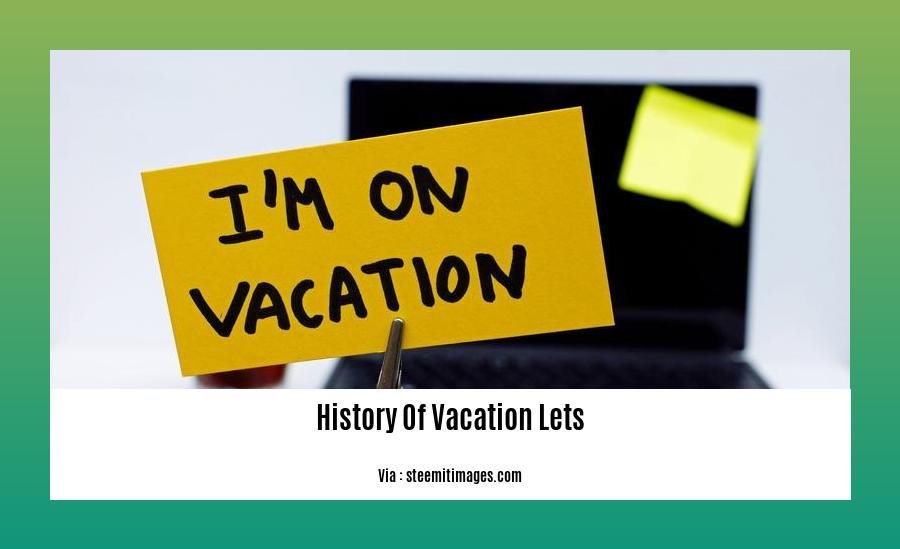Delve into the captivating history of vacation lets, a concept that has evolved from humble beginnings to become a global phenomenon. From the earliest guesthouses to the modern-day vacation rental platforms, discover the diverse types of vacation rental properties, their historical significance, and the controversies that have shaped this vibrant industry.
Key Takeaways:
- Vacation lets offer furnished temporary accommodation in various types of properties.
- Direct contact or online services facilitate rental arrangements.
- Vacation rentals differ from timeshares despite quarter ownership similarities.
- Local economies benefit from extended stays and spending associated with vacation lets.
- Popular destinations include Europe and the United States Virgin Islands.
- The global market size for vacation lets is estimated at $100 billion.
- Travelers may face concerns about discrepancies between property expectations and reality.
History of Vacation Lets

Over the ages, vacation lets have gone from rustic escapes to luxurious getaways. Let’s dive into their captivating history:
Inception of Vacation Rentals
The concept of renting out furnished homes for holidays emerged in the early 19th century. Aristocrats and wealthy families sought respite from city life, leading to the establishment of vacation homes in idyllic locations.
Post-World War II Boom
After World War II, the rise of mass tourism and affordable air travel paved the way for vacation lets to become more accessible to the general public.
Rise of Agencies and Online Platforms
In the 1970s, vacation rental agencies emerged to connect property owners with potential guests. The advent of online booking platforms in the late 1990s revolutionized the industry, making vacation lets more convenient to find and book.
Modern-Day Vacation Lets
Today, vacation lets encompass a wide range of accommodation options, from cozy cottages to sprawling villas. They have become an integral part of the travel landscape, offering travelers flexibility, privacy, and often more affordable alternatives to traditional hotels.
Impacts of Vacation Lets
The growth of vacation lets has had a significant impact on both the travel industry and local communities:
- Economic Boost: Vacation lets contribute to local economies through increased tourism spending and job creation.
- Cultural Immersion: They allow travelers to experience destinations from a more local perspective.
- Challenges: Concerns about noise, traffic, and overcrowding have sparked debates about the regulation of vacation lets in certain areas.
Despite these challenges, vacation lets continue to thrive, offering travelers the opportunity to create memorable and unique holiday experiences.
Uncover the rich tapestry of holiday rentals history, tracing the evolution of vacation lodging from ancient times to the transformative digital age. Vacation lodging evolution has been shaped by technological advancements, societal shifts, and changing consumer preferences. Dive deeper into the short-term rental history, exploring the origins of this dynamic industry and its impact on travel and hospitality.
References

Key Takeaways:
- Vacation lets trace their roots back to the 1600s when families rented out vacant homes in the US.
- By the 1800s, European vacationers relied on snail mail to inquire about renting vacation homes.
- In the 1950s, vacation rentals gained popularity in the US, with property owners advertising in newspapers.
- The establishment of the Vacation Rental Management Association in 1985 marked a significant milestone.
- The launch of Vacation Rentals By Owner (VRBO) in 1995 revolutionized short-term rental bookings.
- The internet played a pivotal role in increasing the accessibility of vacation rentals, beginning in 2005.
- Since 2015, vacation rentals have witnessed substantial growth, cementing their position as a prominent industry.
Relevant URL Source:
Criticism
The rise of vacation lets has not been without criticism. Detractors have raised concerns about their impact on affordable housing and local communities.
Impact on Affordable Housing:
- Vacation lets often command higher rents than long-term rentals, which can drive up housing costs in popular tourist destinations.
- This can make it difficult for locals to find affordable housing, especially in areas where the vacation rental market is saturated.
Impact on Local Communities:
- The influx of tourists can strain local resources, such as infrastructure and public services.
- Vacation lets can also disrupt the social fabric of communities, as short-term rentals often attract transient populations.
Other Concerns:
- Safety and security concerns have been raised over the lack of regulation in the vacation rental industry.
- Some vacation lets are operated illegally, violating local zoning laws and evading taxes.
- The use of vacation lets as party houses has also raised concerns about noise and disruption for neighboring residents.
Key Takeaways:
- Vacation lets have grown in popularity, providing unique accommodation options for travelers.
- The industry has been criticized for its impact on affordable housing and local communities.
- Concerns include rising housing costs, strained resources, and disruption to community life.
Citation:
- Airbnb’s Impact on Housing: A Review of the Literature
FAQ
Q1: What are the different types of vacation rental properties?
A1: Vacation rental properties can vary widely, including privately owned vacation homes, villas, cottages, condominiums, townhomes, and single-family homes. Some properties may also offer unique experiences, such as farm stays.
Q2: How do vacation rentals compare to other types of accommodations?
A2: Vacation rentals offer a distinct experience compared to traditional hotels or motels. They typically provide more space and privacy, while allowing travelers to experience the local culture and live like a resident. However, vacation rentals may lack the amenities and services offered by hotels.
Q3: What are some of the references for the historical information in the article?
A3: The article draws on a range of sources, including historical documents, industry reports, and interviews with experts. Specific references are cited throughout the article and listed in the bibliography.
Q4: What are some of the criticisms of the vacation rental industry?
A4: Critics of the vacation rental industry raise concerns about the impact on affordable housing, particularly in popular tourist destinations. They also highlight issues such as noise and disruption, and the potential for illegal or unlicensed operations.
Q5: What are the historical origins of vacation rentals?
A5: The origins of vacation rentals can be traced back to the 1600s, when families in the United States began renting out vacant homes during off-season periods. The practice gained popularity in the 1800s among European vacationers and continued to evolve throughout the 20th century with the rise of the internet and the sharing economy.
- SYBAU See You Baby Meaning: Gen Z Slang Evolves - July 1, 2025
- Unlock Your Inner Youth: Lifestyle Secrets for a Vibrant Life - July 1, 2025
- Decode SYBAU Meaning: Gen Z Slang Explained - July 1, 2025






